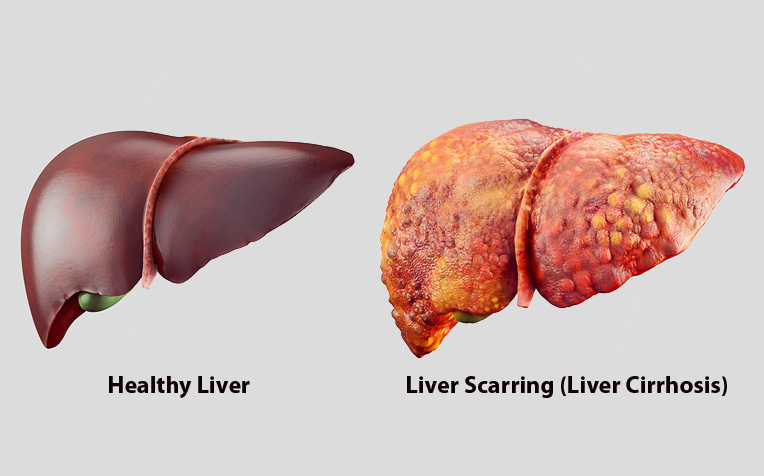
Liver scarring or liver cirrhosis refers to a shrunken, scarred and hardened liver with potential for deterioration of liver function. It results from chronic (long-term) damage to the liver from various causes, leading to progressive scarring of the liver over years.
Liver cirrhosis is a serious condition because once the liver becomes cirrhotic, the damage to the liver is irreversible. This leads to progressive liver failure, complications of cirrhosis, liver cancer and eventual death.
“Not everyone who drinks large amounts of alcohol will get liver cirrhosis. However, those who have hepatitis C are more likely to suffer liver damage from alcohol,” notes
Dr Tan Hiang Keat, Consultant from the
Department of Gastroenterology and Hepatology at
Singapore General Hospital (SGH), a member of the
SingHealth group.
Read more: Fatty liver disease is on the rise! What are the causes, symptoms and how to reverse it?
Risk factors for liver scarring (liver cirrhosis)
You may be at risk of liver cirrhosis if you have one of the following conditions:
- Chronic hepatitis B
- Chronic hepatitis C
- Chronic excessive alcohol intake
- Fatty liver disease (non-alcoholic steatohepatitis)
- Autoimmune liver disease (autoimmune hepatitis, primary biliary cirrhosis or primary sclerosing cholangitis)
- Wilson disease, hemochromatosis and other rare inherited liver diseases
Read more: Hepatitis B carriers (about 150k Singaporeans) are 100 times more likely to develop liver cancer than non-carriers. What do you need to watch out for?
Liver scarring (liver cirrhosis) is preventable
Although the damage from liver cirrhosis can't be undone, early treatment can slow down further damage. Your best protection is to take steps to prevent liver cirrhosis:
- A balanced diet will provide everything you need to keep your overall wellbeing in check.
- Maintain a healthy weight.
- The tolerance for alcohol varies greatly from person to person, so know your limits and do not exceed them as much as possible. For men, it’s 14 units a week and in women, seven units a week.
NOTE: One unit equals 10ml or 8g of pure alcohol. The number of units in a drink is based on the size of the drink as well as its alcohol strength. For e.g. a glass (250ml) of wine has 3 units, a standard can (440ml) of beer has 2 units and a shot (25ml) of spirits carries 1 unit. - Reduce your risk of Hepatitis B and C.
- Do not mix alcohol and drugs.
Read more:
10 Tips for a healthier liver
--
Articles on
HealthXchange.sg are meant for informational purposes only and cannot replace professional surgical, medical or health advice, examination, diagnosis or treatment. Photo courtesy of iStock.